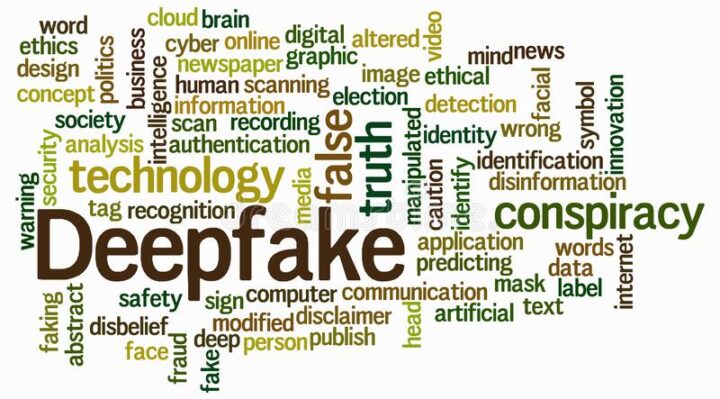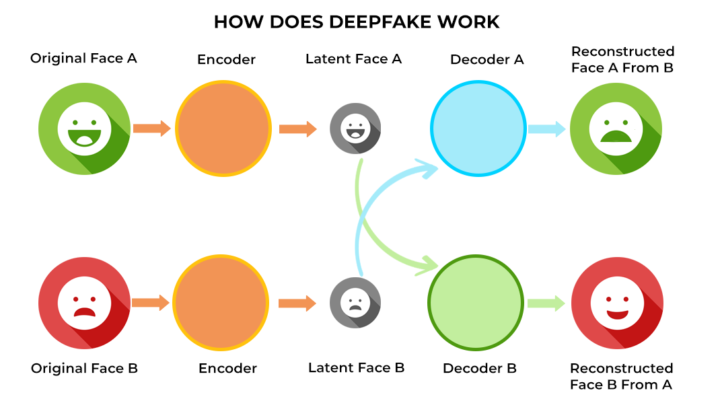
Background
Cyberspace Administration of China is rolling out new regulations to restrict the use of deep synthesis technology and curb disinformation which is effective from January 10, 2023.
Deep Synthesis
It is the use of technologies, including deep learning and the manifestation of reality or augmented reality, to create text, images, audio, and video to generate virtual scenes.
Application:
Swap the face or voice of one person with another. Generate celebrity porn videos and produce fake news.
Commit financial fraud and scams among other wrongdoings.
Challenges:
Difficult to detect with the advancement of technology.
What is Deepfake?

- Compilation of artificial images and audio with the use of machine-learning algorithms to create the same image and audio as seen in the above picture.
- It is used to spread fake information and replace a real person’s appearance, voice, or both with similar artificial likenesses or voices.
- It can create people who are not in existence.
- It can fake the original people saying and doing those things they did not say or do.
- In 2017-an anonymous Reddit user called himself “Deepfakes”, this user manipulated Google’s open-source, deep-learning technology to create and post pornographic videos-face-swapping.
- Like scams and hoaxes, celebrity pornography, election manipulation by doping the pictures or videos of Prime Minister’s or President’s, social engineering, automated disinformation attacks, identity theft and financial fraud, and the local people are really not able to distinguish between what is real or fake.
How it can be prevented?

It can be somehow prevented by using anti-fake technology by finding a reliable means to identify deepfakes attacks, especially using automated technologies, is one way for businesses to protect themselves against them. Such an opportunity is AI-powered detecting software but this is practical only by people who are highly digitally qualified.
What is the new policy of other countries to curb Deepfakes?
- China’s policy is to fetch deep synthesis service providers and users so that that any doctored content using the technology is explicitly labelled to ensure that people will be able to distinguish between real and fake.
- It can be traced back to its generator.
- China has made it Mandatory for people using technology to edit someone’s image or voice, to notify them and take the consent of the person.
- While reposting any news made by the technology, the source can only be from the government-approved list of news outlets.
- Also comply with local laws, respect ethics, and maintain the “correct political direction and correct public opinion orientation”.
- The European Union has an updated Code of Practice for it, which requires tech companies such as Google, meta to take measures in countering deepfakes and fake accounts on their platforms.
- These companies have six months to implement their measures once they have signed up to the code.
- If found non-compliant with the regulations then these companies can face fines of as much as 6% of their annual global turnover.
- Introduce in 2018 the Code of Practice on Disinformation.
- In July 2021, the U.S. has introduced the bipartisan Deepfake Task Force Act to help the Department of Homeland Security(DHS), to counter Deepfake technology.
- It guides the DHS to conduct an annual study of Deepfakes.
- It assesses the technology used and tracks its uses by foreign and domestic entities to come up with available countermeasures to tackle the same.
What about India?
- There are no specific legal laws against using deepfakes technology in India.
- Specific laws need to be made that could be addressed for misusing the tech, which includes copyright Violation, Defamation, and cyber felonies.
- There are certain laws which not directly but generally have power against such activities such as section 67 and 67A of The Information Technology Act 2000 (“IT Act”) provide punishment for sexually explicit material in electronic form.
- Section 500 of the Indian Penal Code 1860 provides punishment for defamation. But these two are not enough we need some more laws that provide special security.
- A strong data protection law is needed which has not come in existence yet.
Read more on TechRuled



